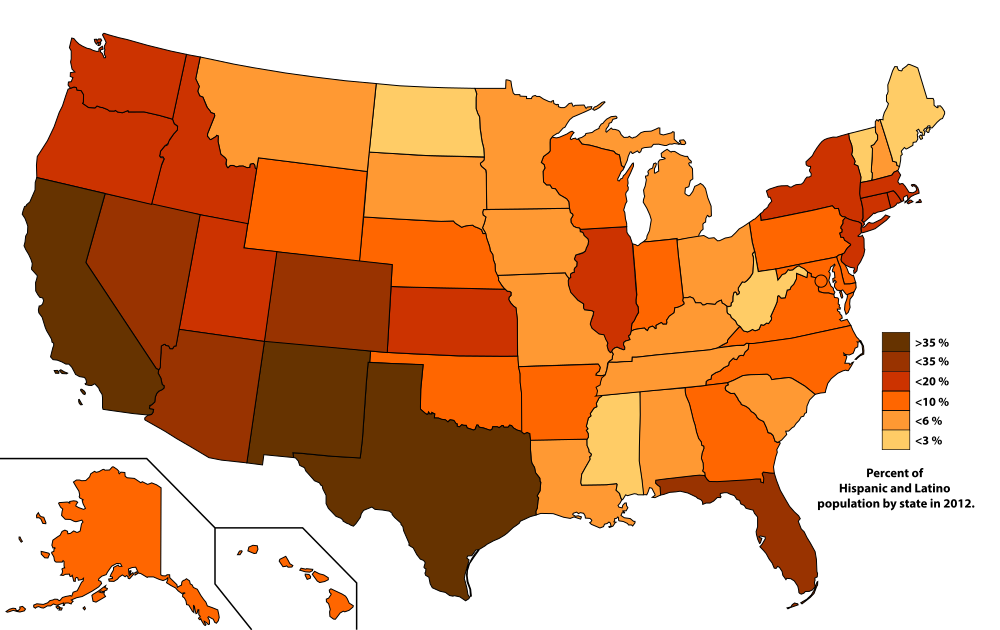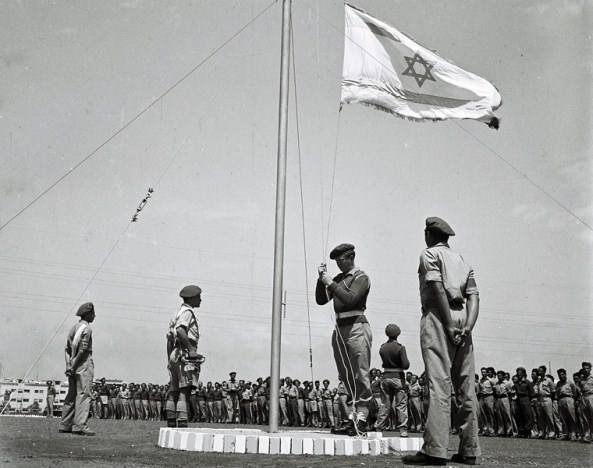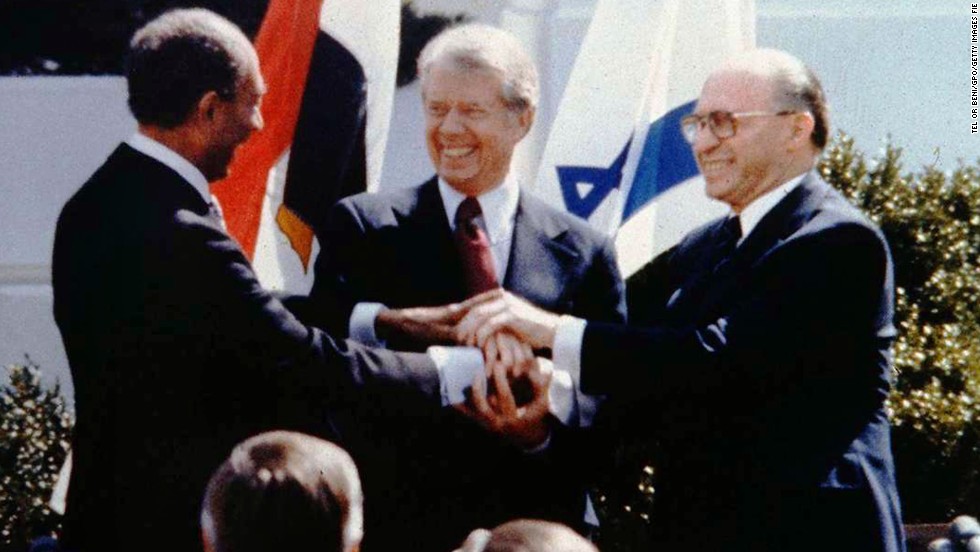 The Immigration and Nationality Act of 1965, or Hart-Cellar Act, was a huge break from nearly one hundred years of nativism and immigration restrictions based on race and origin. While the Immigration and Nationality Act kept some of these provisions (including one that barred homosexual immigration), the shift in the American attitude towards immigration was obvious. The Civil Rights Movement of the 1960's carried over into the immigration debate, especially in regards to its race and nationality quotas. This new act prioritized family reunification, specialized skills, and established national caps, but focused more so on the categories of skills rather than nation of origin. It was the first time that a US immigration act had placed restriction on Western European immigration which had been basically unlimited from the beginning of American history. President Johnson spoke about the bill's consequences and how the status quo would not change, but he was completely wrong.
The Immigration and Nationality Act of 1965, or Hart-Cellar Act, was a huge break from nearly one hundred years of nativism and immigration restrictions based on race and origin. While the Immigration and Nationality Act kept some of these provisions (including one that barred homosexual immigration), the shift in the American attitude towards immigration was obvious. The Civil Rights Movement of the 1960's carried over into the immigration debate, especially in regards to its race and nationality quotas. This new act prioritized family reunification, specialized skills, and established national caps, but focused more so on the categories of skills rather than nation of origin. It was the first time that a US immigration act had placed restriction on Western European immigration which had been basically unlimited from the beginning of American history. President Johnson spoke about the bill's consequences and how the status quo would not change, but he was completely wrong."[The Immigration and Nationality Act of 1965] is not a revolutionary bill. It does not affect the lives of millions... It will not reshape the structure of our daily lives or add importantly to either our wealth or our power." Johnson 1965The bill would change the face of the United States and the structure of the daily lives of Americans forever. It brought about the largest diversification of the American population seen in history and would impact American demographics drastically for generations to come.
Hispanic Americans
Hispanic Americans are the largest non-White demographic in the United States and its population is largely concentrated in the Sunbelt region of the west, namely California, Arizona, New Mexico, and Texas. First under Spain and then absorbed into the United States, Hispanics have maintained a strong cultural heritage shown throughout the American Southwest. Hispanic Americans went from being 14% of the immigrant population in the 1960's to nearly half of it in the early 2000's. Hispanics have made significant impacts to the politics of the United States as politicians have more recently begun focusing on the "Hispanic vote" which is a very strong voting bloc in the Southwest. Just like other minority groups in the United States, Hispanics have a history of discrimination and have suffered severe repercussions such as the Zoot Suit Riot of 1943 and forced deportations in the beginnings of the Great Depression and during Operation Wetback in the 1950's. Hispanic Americans largely responded by reaffirming their status as American citizens and fighting for their rights alongside other groups. Cesar Chavez's National Farm Workers Association was one of the prime examples of a peaceful movement to push for further rights for Mexican Americans. The Chicano movement of the late 1960's was an additional cultural movement by Hispanics to join in on the larger Civil Rights Movement of the times. They fought for issues such as farmers rights, discrimination, education, and voter disenfranchisement and marched arm in arm with many other Civil Rights protestors of the time. |
| Percent of Hispanic Population by State in 2012 |
Regardless of these challenges, the population of 50+ million Hispanic Americans in the United States is growing every year and will be a significant portion of the minority population set to overtake the White population in 2043.
African Americans
African Americans are the second largest non-White demographic in the United States with its population largely concentrated in the South, Northeast, and Northwest regions of the United States. Their first ancestors were first brought over as slaves or hard laborers and lived through centuries of hardship and torture until the Civil War in the 1860's. Ever since the 13th, 14th, and 15th Amendment guaranteed the end of slavery, the promise of equal civil rights, and the right to vote, African Americans have faced massive hurdles in winning back their civil rights. Following the Great Migration that started in the 1910's, African Americans have spread out from the South and raised their own families across the United States. From the Jim Crow laws, Black Codes, lynchings, hostile white neighbors, disinterest from the federal government, and every possible attempt at voter disenfranchisement, African Americans overcame many and continue to fight for these today. Immigration from Africa did increase following the Immigration Act of 1965, but unlike other groups, African Americans had been in the United States for just as long as the Whites and were culturally removed from their African counterparts. African American men have fought in every war from our Revolutionary War in an attempt to earn a guarantee of protection of their rights from the federal government. Each failure ultimately lead to the concept of the Double Victory in World War 2 by African Americans who wanted to beat tyranny abroad and segregation at home. When the soldiers returned, they continued to fight for a desegregated army and a freer America. The NAACP (1905), Universal Negro Improvement Association (1914), Student Nonviolent Coordinating Committee (1960), the Congress of Racial Equality (1942), Freedom riders, and the Black Panter Party (1966) all represented the actions of many blacks, as well as whites, to fight for civil rights and equality for African Americans.
Immigration from Africa did increase following the Immigration Act of 1965, but unlike other groups, African Americans had been in the United States for just as long as the Whites and were culturally removed from their African counterparts. African American men have fought in every war from our Revolutionary War in an attempt to earn a guarantee of protection of their rights from the federal government. Each failure ultimately lead to the concept of the Double Victory in World War 2 by African Americans who wanted to beat tyranny abroad and segregation at home. When the soldiers returned, they continued to fight for a desegregated army and a freer America. The NAACP (1905), Universal Negro Improvement Association (1914), Student Nonviolent Coordinating Committee (1960), the Congress of Racial Equality (1942), Freedom riders, and the Black Panter Party (1966) all represented the actions of many blacks, as well as whites, to fight for civil rights and equality for African Americans. Victories came, such as in the ruling of Brown v Board of Education (1954), the ordered desegregation of the Montgomery buses, the Civil Rights Act of 1964, and the Voting Rights Act of 1965, but change was still slow. Persistent problems within African American communities, such as high school drop out rates, crime rates, and disproportionate poverty rates, continue to go unadressed.
The Refugee Act of 1980 largely affected Latin American, Asian, and African populations by enabling them to more easily seek refuge in the United States from political violence overseas. In recent years, this attitute has largely soured amongst a significant bloc of the American electorate as the country splits on the issue of refugees.
Asian Americans
As the largest growing minority in the United States, Asian Americans account for only 5% of the population, largely focused in the West Coast states and North East, the most recent boom in the Asian population stems from increased immigration from nations such as China and India whose growing middle classes turn to the United States for jobs and education. The number of immigrants from Asia have recently outpaced Hispanic immigration and continue to fuel the changing face of the United States. The Asian voting population has not been sought after to the extent of other groups, but its growth in recent years is starting to affect national politics. Asian-Americans have faced heavy immigration and racial discrimination in past centuries through the Chinese Exclusion Act of 1882 (barred further immigration), the Geary Act of 1892 (forced proof of citizenship), the Gentleman's Agreement of 1907 (barred Japanese immigration), the Asiatic Barred Zone Act of 1917 (barred the rest of Asia), and the Immigration Act of 1921 (national quotas to top it off).Asians were faced with heavy discrimination from the American government and were utilitized as cheap labor as seen with the building of the Union Pacific railroad. They were sought after as cheap labor and low-skilled workers, but immigration acts restricted their movement and effectively barred their entry for many decades. Just like all other minority groups, Asian Americans, fought in the US Army to prove their citizenship and loyalty to their country. The Immigration Act of 1965 largely paved the way for increased Asian immigration from many regions of Asia. Thousands fled political violence in China, the civil war in Vietnam, brutal regimes in Southeast Asia, and thousands more sought out new homes for their children. Asian Americans have played a far more minor role in the history of the United States given their small number and lack of major organizations of ethnic unity, but still fought back against racial discrimination that boycotted all Asian-run stores and interrned whole populations of US citizens thought to be potential spies.

The most recent waves have been far different from past waves of Asian immigration and much other immigration. The large majority of Asian immigrants come to the United States for education and high-skilled works in the tech industry already armed with education and some level of English. This has driven this group to be overrepresented in higher education universities, have lower high school drop out rates, and have the highest median incomes of all ethnic groups in the United States. There are, however, differences between South, Southeast, and East Asians that become apparent as the level of education and income begins to vary between subsections.
The New Face of America
The profile of America is changing rapidly in the face of decades of liberalized immigration and higher birthrates amongst minority populations. White Americans are losing their dominant position in American society to a multicultural coalition of minorities who came to the United States for education or safety and who have come to make this country their home. As the face of the United States continues to dramatically change, the United States continues to thrive and stand out as an example of a multicultural republic with millions of different races, creeds, and beliefs thrown together into one country. It is now the country of diversity more than ever before- the Great Melting Pot.Works Cited
Anderson, Monica. "African Immigrant Population in U.S. Steadily Climbs." Pew Research Center RSS. Pew Research Center, 02 Nov. 2015. Web. 28 Apr. 2016.
Baral, Susmita. "Latinos Are No Longer The Fastest Growing Minority Group In The U.S." Latin Times. IBT Media, 26 June 2014. Web. 28 Apr. 2016.
"Demographics of Asian Americans." Wikipedia. Wikimedia Foundation, n.d. Web. 28 Apr. 2016.
"Demography of the United STates." Wikipedia. Wikimedia Foundation, n.d. Web. 28 Apr. 2016.
"Fast Facts." Fast Facts. Institute of Education Sciences, n.d. Web. 28 Apr. 2016.
Gutiérrez, David G. "An Historic Overview of Latino Immigration and the Demographic Transformation of the United States." National Parks Service. U.S. Department of the Interior, n.d. Web. 28 Apr. 2016.
History.com Staff. "Black History Milestones." History.com. A&E Television Networks, 01 Jan. 2009. Web. 28 Apr. 2016.
History.com Staff. "U.S. Immigration Since 1965." History.com. A&E Television Networks, 01 Jan. 2010. Web. 28 Apr. 2016.
"Modern Immigration Wave Brings 59 Million to U.S., Driving Population Growth and Change Through 2065." Pew Research Centers Hispanic Trends Project RSS. Pew Research Center, 28 Sept. 2015. Web. 28 Apr. 2016.
N.d. The Intercept_. Web. 28 Apr. 2016.
Peralta, Eyder. "It Came Up In The Debate: Here Are 3 Things To Know About 'Operation Wetback'" NPR. NPR, 11 Nov. 2015. Web. 28 Apr. 2016.
Percent of Hispanic and Latino Population by State in 2012. 2012. Wikipedia. Web. 28 Apr. 2016.
Piccorossi, Michael. "Asian Americans." Pew Research Centers Social Demographic Trends Project RSS. Pew Research Center, 18 June 2012. Web. 28 Apr. 2016.
"Poverty Rate By Race/Ethnicity." Poverty Rate by Race/Ethnicity. Kaiser Family Foundation, n.d. Web. 28 Apr. 2016.
Ravitz, Jessica. "Pew Study: Asian Immigrants May Overtake Hispanics." CNN. Cable News Network, 28 Sept. 2015. Web. 28 Apr. 2016.
"The Rise of Asian Americans." Pew Research Centers Social Demographic Trends Project RSS. Pew Research Center, 19 June 2012. Web. 28 Apr. 2016.





